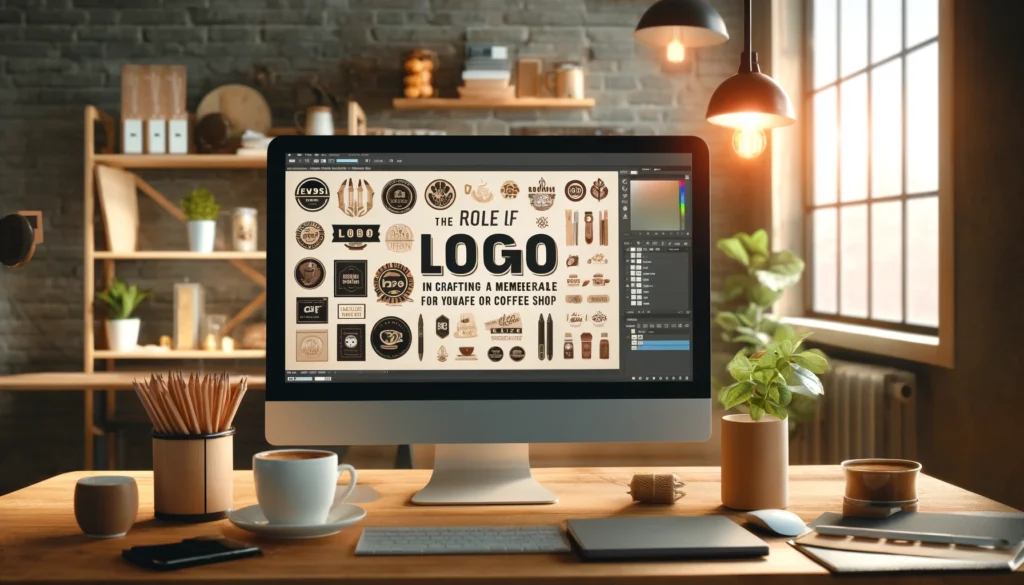







In the highly competitive non-alcoholic beverage market, where health-conscious consumers seek products that align with their lifestyle values, a distinctive logo is essential for standing out. A well-crafted logo not only differentiates your brand but also communicates the essence of your product, reflecting its health benefits and lifestyle appeal. This article explores the critical role of a logo in the non-alcoholic beverage industry, showcases successful brands with memorable logos, and offers practical tips for designing a logo that resonates with your target audience and captures attention on store shelves.
The non-alcoholic beverage market is crowded with numerous brands vying for consumer attention. In such a competitive environment, establishing a unique brand identity is crucial for standing out. Your logo is the cornerstone of this identity, serving as the visual representation of your brand’s values, mission, and promise. A distinctive logo helps your brand carve out a unique space in the market, making it easier for consumers to recognize and remember your products.
A well-designed logo can encapsulate your brand’s story, ethos, and differentiators, setting you apart from competitors. Whether it’s through innovative design, bold colors, or unique typography, your logo should communicate what makes your brand special and why consumers should choose your products over others.
Brand recognition is a key factor in driving consumer loyalty and repeat purchases. A distinctive logo plays a vital role in enhancing this recognition by making your brand easily identifiable across various touchpoints, from packaging to advertising to social media. The more frequently consumers see your logo, the more familiar they become with your brand, which can increase their likelihood of choosing your products.
Moreover, a memorable logo can foster an emotional connection with consumers, making them more likely to develop loyalty to your brand. This connection is particularly important in the non-alcoholic beverage market, where consumers often make purchasing decisions based on personal values and lifestyle choices. A logo that resonates with these values can help build long-term brand loyalty.
Health-conscious consumers are drawn to brands that reflect their commitment to wellness, sustainability, and mindful living. Your logo should create a visual connection with these consumers by embodying the principles of health and well-being. This connection can be achieved through the use of clean, minimalist design, natural colors, and imagery that evokes freshness and vitality.
A logo that aligns with the values of health-conscious consumers not only attracts their attention but also reinforces their decision to choose your products. By communicating the health benefits and lifestyle alignment of your beverages through your logo, you can strengthen your brand’s appeal to this important demographic.
Color plays a significant role in logo design, particularly in the non-alcoholic beverage industry, where certain colors can evoke specific associations with health, freshness, and vitality. For example, green is often associated with nature, wellness, and sustainability, making it an ideal choice for brands that emphasize organic or natural ingredients. Blue can convey purity, hydration, and trust, while bright, vibrant colors like orange and yellow can suggest energy and rejuvenation.
Imagery also plays a crucial role in conveying the health-conscious nature of your products. Symbols like leaves, fruits, water droplets, or sunrises can evoke feelings of freshness, vitality, and natural goodness. These visual cues help consumers quickly understand the benefits of your products and align them with their health and lifestyle goals.
In the health and wellness sector, simplicity and clean design are often associated with purity, transparency, and quality. A minimalist logo that avoids clutter and complexity can effectively communicate these values, making your brand more appealing to health-conscious consumers. Clean lines, simple shapes, and a limited color palette can convey a sense of sophistication and trustworthiness, qualities that are highly valued in the non-alcoholic beverage market.
Simplicity in design also enhances the versatility of your logo, ensuring that it looks great across various packaging formats, marketing materials, and digital platforms. A clean, simple logo is easier to recognize and remember, which can contribute to stronger brand recall and consumer loyalty.
Your logo should not only reflect the health-conscious nature of your products but also communicate the lifestyle and wellness aspects of your brand. This can be achieved through the use of typography, imagery, and design elements that align with your brand’s messaging and target audience. For example, a brand that promotes active, outdoor lifestyles might incorporate imagery related to nature or fitness, while a brand focused on relaxation and mindfulness might use softer colors and calming symbols.
Typography also plays a key role in communicating your brand’s personality. A bold, modern font might convey energy and dynamism, while a more organic, hand-drawn font could suggest authenticity and a personal touch. The goal is to create a cohesive visual identity that resonates with your target audience’s lifestyle and values.
LaCroix’s logo is a perfect example of how a playful and vibrant design can capture consumer attention and reflect a brand’s personality. The logo features the brand name in a whimsical, hand-painted script, with a bright, colorful palette that conveys energy and freshness. The design aligns with LaCroix’s positioning as a fun, refreshing, and trendy beverage, making it a favorite among health-conscious consumers who seek a flavorful yet calorie-free alternative.
Oatly’s logo is bold, simple, and reflects the brand’s commitment to transparency and sustainability. The logo features the brand name in a chunky, all-caps font with a rough, hand-cut aesthetic, conveying a sense of authenticity and straightforwardness. The design is minimalist, yet it effectively communicates Oatly’s mission to provide a plant-based, eco-friendly alternative to dairy. The logo’s simplicity makes it instantly recognizable and aligns with the brand’s honest, no-nonsense approach to marketing.
Innocent Drinks’ logo is a great example of how a friendly and approachable design can resonate with consumers and build a strong brand identity. The logo features a simple, hand-drawn haloed fruit, with a playful and welcoming font. The design is both fun and unpretentious, reflecting Innocent’s brand values of simplicity, goodness, and transparency. The logo’s charm and relatability have helped Innocent Drinks become a beloved brand in the non-alcoholic beverage market.
Sanzo, a brand known for its Asian-inspired sparkling water, has a logo that reflects its minimalist and culturally rich identity. The logo features the brand name in a clean, sans-serif font with subtle Asian-inspired design elements, such as a wave motif. The minimalist design conveys purity and sophistication, while the cultural references add depth and authenticity. Sanzo’s logo stands out for its elegance and simplicity, appealing to consumers who value both quality and cultural connection.
Before designing your logo, it’s essential to have a deep understanding of your target audience’s values, preferences, and lifestyle choices. Consider what motivates your consumers to choose non-alcoholic beverages—whether it’s health, sustainability, or taste—and how your brand aligns with these motivations. Your logo should reflect these values and resonate with the emotions and desires of your target audience.
Conducting market research and analyzing competitor logos can provide valuable insights into what works in the non-alcoholic beverage industry and how you can differentiate your brand. By understanding your audience, you can create a logo that not only looks appealing but also connects with consumers on a deeper level.
Color and typography are two of the most important elements in creating a logo that stands out on the shelves and resonates with your target audience. The colors you choose should convey the key attributes of your brand, such as health, freshness, or vitality. For example, green might suggest natural ingredients, while blue could convey hydration and purity.
Similarly, the font you choose should align with your brand’s personality. A modern, sans-serif font might convey simplicity and cleanliness, while a hand-drawn or script font could suggest a more personal, artisanal approach. The key is to create a harmonious design that communicates your brand’s values and appeals to your target audience.
Incorporating symbols and imagery that reflect the health-conscious and lifestyle-oriented nature of your products can make your logo more engaging and relevant to consumers. Consider using elements like fruits, leaves, or water droplets that evoke freshness and natural goodness. These images can help create a strong visual connection between your logo and the benefits of your products, making it easier for consumers to understand what your brand stands for.
The imagery should be simple and easy to recognize, ensuring that it enhances rather than overwhelms the overall design. By choosing symbols that align with your brand’s message, you can create a logo that resonates with consumers and reinforces your brand’s identity.
Your logo will appear across a wide range of applications, from product packaging and labels to advertising, social media, and promotional materials. It’s crucial to design a logo that is versatile and scalable, ensuring it looks great in all contexts. A simple, clean design is often the most effective, as it can be easily adapted to different sizes and formats without losing its impact.
Test your logo in various applications to ensure it remains clear, legible, and visually appealing in all formats, from small bottle caps to large billboards. A versatile logo helps maintain a consistent brand image across all touchpoints, enhancing recognition and trust.
Once you have a logo design, it’s important to test it with your target audience to ensure it resonates and effectively communicates your brand’s message. Consider conducting focus groups or surveys to gather feedback on how well the logo reflects your brand’s identity and how it compares to competitors’ logos. Use this feedback to refine your design, making adjustments to elements like color, typography, or layout as needed.
A well-tested and refined logo is more likely to make a strong impact, helping you build a strong brand identity that resonates with consumers and stands out on the shelves.
Why is a distinctive logo important for non-alcoholic beverage brands?
A distinctive logo is important because it serves as the visual representation of your brand, helping to differentiate your products in a competitive market, enhance brand recognition, and create a visual connection with health-conscious consumers. A well-designed logo can attract attention, build loyalty, and drive sales.
What colors work best for non-alcoholic beverage logos?
The best colors for non-alcoholic beverage logos are those that convey health, freshness, and vitality. Green is often associated with nature and wellness, while blue can suggest purity and hydration. Bright, vibrant colors like orange and yellow can evoke energy and rejuvenation. The choice of color should align with your brand’s personality and the message you want to convey.
How can a logo influence consumer perception?
A logo can influence consumer perception by conveying the quality, health benefits, and lifestyle alignment of your products. A well-designed logo creates a positive first impression, making consumers more likely to trust your brand and choose your products. Consistent use of the logo across all platforms also reinforces your brand’s identity, enhancing recognition and loyalty.
Should I include symbols in my non-alcoholic beverage logo design?
Including symbols that reflect the health-conscious and lifestyle-oriented nature of your products can add depth and make your logo more visually engaging. Consider using elements like fruits, leaves, or water droplets that evoke freshness and natural goodness. These symbols can help create a strong visual connection between your logo and your brand’s message.
How do I ensure my logo stands out in a competitive market?
To ensure your logo stands out in a competitive market, focus on creating a unique, memorable design that reflects your brand’s values and resonates with your target audience. Consider innovative typography, distinctive color combinations, or meaningful symbols. The goal is to create a logo that is both visually appealing and reflective of your brand’s strengths.
Can a logo really impact the success of my non-alcoholic beverage brand?
Yes, a well-designed logo can significantly impact the success of your non-alcoholic beverage brand by enhancing brand recognition, building trust with consumers, and creating a strong, memorable brand identity. A compelling logo can attract new customers, foster long-term loyalty, and contribute to the overall growth and success of your brand.
In the competitive non-alcoholic beverage market, a distinctive and well-crafted logo is essential for building a strong and recognizable brand identity. By understanding your target audience, choosing the right design elements, and ensuring your logo is versatile and impactful, you can create a logo that not only captures the essence of your products but also resonates with consumers and stands out on the shelves. Whether you’re launching a new beverage brand or rebranding an existing one, investing in a professional logo is key to building a successful and enduring presence in the market.
Ready to take your project to the next level? At Freelanty, we connect you with talented freelancers who bring your vision to life. Contact us today and discover how we can help you succeed.